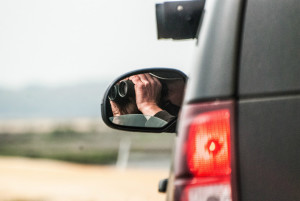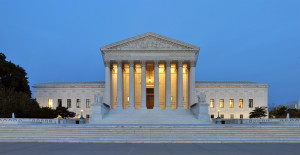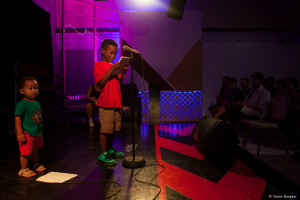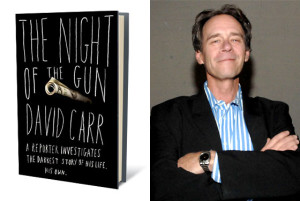New 6/30 Episode: THE BEAR

This week the prison escapee saga out of upstate New York has come to a close. But the art and lifestyle of hunting for fugitives goes on, especially for those who aren’t members of law enforcement. They are bounty hunters.
Meet “The Bear,” or as his birth certificate shows, Frank Abramovitz.
“I don’t care if you hide in the ceiling we’re gonna find you,” he says. He owns something called a fugitive recovery agency in Manchester, New Hampshire.
Bounty hunters are kind of like human bloodhounds. They’re dogged. They won’t stop until they get who they’re looking for.
Reporter Kalila Holt joined The Bear on the trail. Listen here.
In this week’s show we also have an extra segment:
Our Executive Producer and Host, Nancy Mullane, talks with William Dennis, a man on California’s Death Row, and Rory Little, a Professor of Law at UC Hastings, about Glossip v. Gross, the Supreme Court case about whether the use of the sedative midazolam in lethal injections is constitutional. Listen here.
![]()
Reporter’s Notebook: Kalika Holt

Kirsten: What was your favorite part of reporting the story?
Kirsten: And the most surprising?
Kalila: There was a section of the piece I ended up cutting because it felt too tangential but I was sad to see it go because it was one of the most surprising parts to me. There were a husband and wife that both worked for Frank as investigators, Sean and Erica Blake. Erica told me that before she joined the team, she barely got to see Sean, because when he wasn’t at his other job, he was out with Frank. So Erica just became a bounty hunter too.
![]()
LIVE LAW New Orleans:
Hottest Town, Biggest Crowd, Youngest Storyteller
Life of the Law’s Senior Producer Mary Adkins is the brains and brawn behind LIVE LAW. She just returned from New Orleans and has this update.
What an amazing group of people with unbelievable stories last week at LIVE LAW New Orleans. We had standing room only for the theme “Eyewitness.” There were stories about a skate park, another about infiltrating city hall with tubas, and another about a death with no eye witnesses on a cliff in New Zealand—we heard it all.
But perhaps the highlight was the moment an impromptu storyteller, Jamal, asked at intermission if he could tell a story. Answer: yes. In this photo, Jamal kicks off our second act, backed up by his little brother Kalim.
Listen for their stories on our LIVE LAW podcast, or tune in to WWNO in New Orleans.
![]()
Carroll Seron: On Decisions and Eulogies

Carroll Seron, a Life of the Law advisory scholar and outgoing president of the Law and Society Association, reflects on the stories this week out of Washington D.C., Charleston, and elsewhere.
The week of June 29, 2015 was momentous. We barely caught our breath on Thursday as the Court affirmed the constitutionality of The Affordable Care Act of 2010 when, on Friday, the Court ruled that marriage is a fundamental right, protected under the 14th amendment and, hence, states cannot ban gay marriage. These important decisions represent an enormous victory for protecting a more inclusive and equitable society in the United States. Given the political divides in American society, we should not take these victories for granted!
Then, on Friday, President Obama delivered an eloquent, passionate, and very personal eulogy in honor of State Senator and Pastor Clementa Pinckney and the eight parishioners who were killed in Charleston, South Carolina the week before. The June 17 murder of these nine innocent men and women at a church was all too familiar for those of us who remember or who have studied the Birmingham church bombing of 1963. There are notable differences between 2015 and 1963: today, it appears that the citizens of Charleston came together in ways that would have been unimaginable in 1963—and, we should not lose sight of that.
But, the last several years has, as President Obama reminded us, witnessed what feels like a staggering array of violence, from police shootings of unarmed African American men to children at school in Newton, Connecticut. Last week, I attended a conversation on police-community relations sponsored by NPR in Los Angeles. I came away from this conversation somewhat disheartened by the enormous gulf between the perceptions of the police and citizens around the changes we need to make to reduce the probability of police misuse of force.
So, I feel conflicted as I reflect on the events of the last week: I am thrilled by the Court’s rulings; there is much to celebrate, even as we are reminded in all of the Sunday editorializing that work remains to be done to protect the rights of gay, lesbian, and transgender individuals and to improve the quality of healthcare in the United States. But, I ask myself, will we ever come to terms as a nation with our legacy of slavery and racial divides that wounds the entire country in so many countless ways?
![]()
What We’re Reading: David Carr The Night of the Gun
Nancy Mullane, our Executive Producer and Host, writes this week’s staff review.
Before David Carr was the face of The New York Times. Before he was the country’s eminent media reporter and the leading and beloved subject of a documentary. And before he passed away from cancer in February at his desk, he was a cocaine-shooting, cocaine-smoking, cocaine-snorting addict who couldn’t keep a job or stay out of jail.
His autobiography begins with his life growing up in Minneapolis and follows his step-by-step fall into years of drug addiction and self-immolating destructive behavior. It got so bad at times I had to stop reading to remember why I was along on the ride.
When I finished the last page, I cried. I had become addicted to his brutal writing, and as long as I kept reading, he was still alive.
![]()
Stay tuned for next week’s LIVE LAW story: One Confederate Flag
![]()
“There is no hunting like the hunting of man, and those who have hunted armed men long enough and liked it, never care for anything else thereafter.”
– Ernest Hemingway










